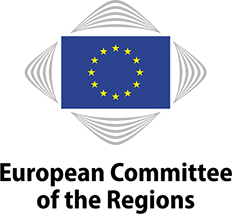This statement applies to content published on the domain: ‘https://regions-and-cities.europa.eu’
It does not apply to other content or websites published on any of its subdomains. These websites and their content will have their own specific accessibility statement.
This website is managed by the European Commission’s Directorate-General for Regional and Urban Policy. It is designed to be used by as many people as possible, including people with disabilities.
You should be able to:
zoom up to 200% without problems
navigate most of the website using just a keyboard
navigate most of the website using a modern screen reader and speech recognition software (on your computer or phone)
This website is designed to comply with the technical standard for websites and mobile apps, EN 301 549, v.3.2.1. This closely follows level ‘AA’ of the Web Content Accessibility Guidelines (WCAG) version 2.1.
Compliance status
This website is partially compliant with technical standard EN 301 549 v.3.2.1 and the Web Content Accessibility Guidelines (WCAG) 2.1 Level AA. See ‘Non-accessible content’ for more details.
The website was last tested on 02/06/2023.
Preparation of this statement
This statement was reviewed on 20/12/2023.
The statement is based on a review by an automated tool called Axe Monitor.
Feedback
We welcome your feedback on the accessibility of the European Week of Regions and Cities website. Please let us know if you encounter accessibility barriers:
- Phone: 00 800 6 7 8 9 10 11
- Contact form: Write to us (please refrain from providing sensitive information in the form, e.g. any information that would reveal personal financial information, information related to your health, or any other sensitive topic).
We try to respond to feedback within 15 business days from the date of receipt of the enquiry by the responsible Commission department.
Compatibility with browsers and assistive technology
The European Week of Regions and Cities website is designed to be compatible with the following most used assistive technologies:
- the latest version of Google Chrome and Apple Safari browsers;
- in combination with the latest versions of JAWS, NVDA, VoiceOver and TalkBack.
Technical specifications
The accessibility of the European Week of Regions and Cities website relies on the following technologies to work with the particular combination of web browser and any assistive technologies or plugins installed on your computer:
HTML
WAI-ARIA
CSS
JavaScript
Non-accessible content
Despite our best efforts to ensure accessibility of the European Week of Regions and Cities website, we are aware of some limitations, which we are working to fix. Below is a description of known limitations and potential solutions. Please contact us if you encounter an issue not listed below.
Known limitations for the European Week of Regions and Cities website:
- Video player – keyboard accessibility: We are aware of some issues with the keyboard accessibility of our video player (when selecting the caption language from the menu, it is not possible to use the arrow keys to move between languages, this can only be done with the TAB key).
- Videos: Videos on this website do not have audio description.
- Graphs and charts – use of colour: Some graphs and charts on the website rely on colour alone to communicate information, which is confusing for people with colour vision deficiency. In charts where labels are not visually associated with the corresponding coloured section, clicking on the labels in the legends toggles the corresponding line, bar or section on or off, which allows users to check which label belongs to which part of the chart. We plan to fix this issue by end October 2023.
- Interactive maps: Interactive maps are not accessible to people with a vision impairment or users who rely on keyboard navigation. We plan to fix this issue by December 2023.
- Colour contrast: some pages have poor colour contrast
- Images: some images do not have alt text descriptions
- PDF documents: some documents are in PDF format and are not accessible



